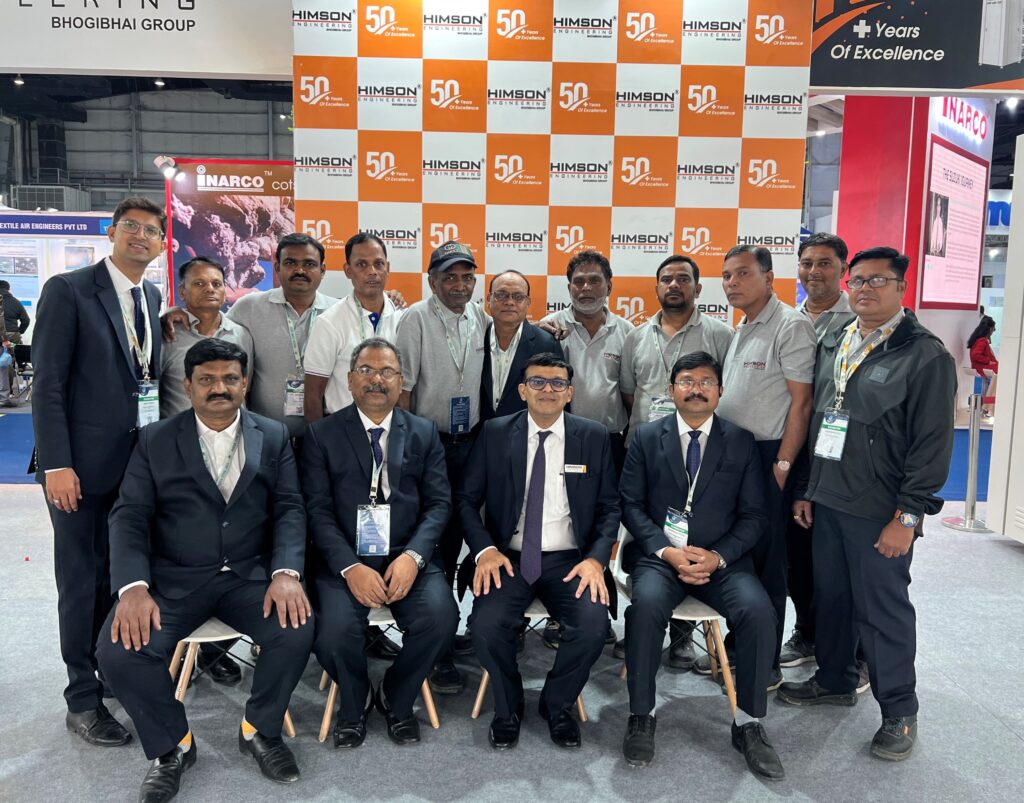Bhogibhai Bachkaniwala was born on 28 March 1935. His father was a fabric manufacturer operating a well known brand ‘Himson Fabrics’. Bhogibhai achieved his graduation degree in Textile Engineering from M.S. University, Baroda. His ambition and hard work led him to found ‘Himson Textile Engineering Industries’, a start-up that turned out to be a multi-billion dollar textile machines manufacturing industry and much more. Bhogibhai firmly believed that if you are concentrated at your aim and dream, nothing can drag you behind. From Bhogibhai’s life, one can learn a lesson that, our background and resources available to us are never limitations once we are committed to achieve our goals. Bhogibhai’s life is perfect example of dedication, perseverance and clear vision. He successfully overcame many insurmountable obstacles and climbed new heights each time.

Bhogibhai had a knack for spotting opportunities. He recognized the need for the quality textiles machineries in India after independence and ventured into the Textile sector, especially in engineering field, capitalizing on the booming market. His penchant for identifying the gaps in the market, his keen observational skills, and his zeal led him to establishing Himson Textile Engineering Industries in 1970s, a major turning point in his journey. Bhogibhai’s philosophy was clear, “Understanding people’s needs and proactively addressing them progressively.” This has been practiced by Himson even today!
Bhogibhai never stepped back challenging status-quo. He always adopted innovating strategies like backward integration, gaining control over raw material and production processes, giving Himson a significant edge. This, not only reduced costs, but also ensured quality control throughout the supply chain. This lesson emphasizes the importance of thinking outside the box and not being afraid of scrapping the obsolete methods. By embracing innovation and staying ahead of the curve, one can definitely gain a competitive advantage and achieve remarkable results.
Bhogibhai understood the potential of the teamwork. He had a knack of identifying the skill of individuals and helping them to sharpen their skills. He empowered Himson employees, fostered a culture of entrepreneurship within Himson. This example teaches us the importance of surround ourselves with talented and supportive individuals. By building a strong team, delegating effectively and empowering others, you can achieve more than you ever could as alone. Bhogibhai was of a strong opinion that Himson’s success is the result of these teams’ hard work and determination.
For Bhogibhai and his family, wealth’s true value lies in philanthropic contributions. Bhogibhai and his family earned respect and admiration in society for the philanthropic activities.

Bhogibhai’s main focus is to be one of the global leaders in Textile Machine manufacturing industry. He aggressively worked on the idea of making India self-sustained in Textile Machinery equipped with cutting edge technologies. This approach resulted into excellence in machine technology, solutions and services to the customers worldwide. Success for him includes inclusive overall growth and satisfaction of customers and employees over wealth and personal achievements.
· 1970’s Bhogibhai took a bold step by setting up a manufacturing unit of twisting & re-winding machine.
· 1977 Himson won the Import substitution award by government of India for indigenous machinery development.
· 1978 Himson tied up with Earnest Scragg Sons Ltd., UK to manufacture Crimping & Draw Texturising machines in India.
· 1982 Himson collaborated with Unilator Ltd., UK to manufacture ceramic parts in India.
· 1984 Himson collaborated with Fadis S.P.A, Italy for precision cone winding machine in India.
· 1985 Himson collaborated with Kukji Machinery Company Ltd., South Korea for manufacturing Shuttle changing looms in India.
· 1987 Himson collaborated with Teijin Seiki Company Ltd., Japan for manufacturing Draw Twisting Machinery in India.
· 1990 Himson collaborated with Heating Elements Ltd., UK for manufacturing Heaters for texturising & draw twisting machines in India.
· 1998 Himson entered into a technical collaboration with Teijin Seiki Textile Machinery Co. Ltd., Japan to manufacture High Speed Draw Texturising Machines with Energy Conserving Short Heaters and Auto Doffing machines in India.
· 2008 In joint corporation with world re-known TMT Machinery, Inc Japan. Himson have manufactured and supplied Auto Doffing Draw Texturising Machine with 288 Spindles. Himson was the 1st in India to manufacture and install Auto Doffing Machines, Also it’s 1st time in the World to supply Auto Doffing machines with 288 Spindles
His gut feeling about the rising demand for synthetic fabric has been proven correct, turning Himson into a leader in the textile industry and establishing Himson’s reputation for shrewd risk-taker. Bhogibhai’s daring venture into the polyester yarn teaches students the importance of trusting their instincts and taking calculated risks. Despite, skepticism, his foresight and confidence in market trends propelled Himson to success, emphasizing that well thought out risks can lead to significant achievements in the business world.
In 2005, Bhogibhai suffered a major stroke, raising concerns about Himson’s dynamic progress. However, he displayed remarkable resilience and determination and regaining control gradually. He again joined the Himson with the same fighting spirit leading Himson towards new heights. This story exemplifies the power of perseverance and overcoming adversity, inspiring those facing challenges in their own lives. Students can learn the invaluable lesson of perseverance and resilience from this narrative, inspiring them to navigate personal and professional obstacles with determination.
In 2008, Bhogibhai’s son, Darshan Bachkaniwala manufactured and supplied Auto Doffing Draw Texturising Machine with 288 spindles in Joint Corporation with world renowned TMT machinery Inc., Japan. This was the first time in the world to supply Auto Doffing machines with 288 spindles. This transformed India’s textile technology to a next revolution. Though, in this project, Bhogibhai was indirectly involved, his vision and emphasis on innovation motivated this transformative move. From this, students can learn significance of visionary leadership and embracing innovation. Bhogibhai’s influence, even posthumously, showcases how fostering a culture of innovation can lead to groundbreaking changes in industries, providing a valuable lesson for aspiring leaders and entrepreneurs.
Bhogibhai is pioneer and father of modern textile yarn processing industries in India in true sense. He is the role model for many. There are many successful players in the market walking in his footsteps.
